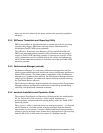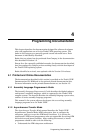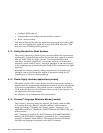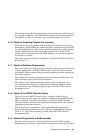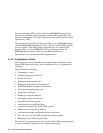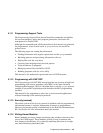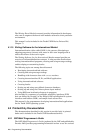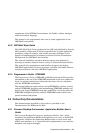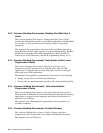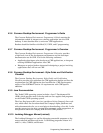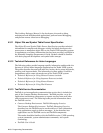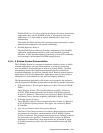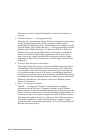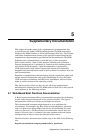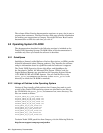components of the OSF/Motif environment: the Toolkit, window manager,
and user interface language.
This manual is for programmers who want to create applications in the
OSF/Motif environment.
4.2.2 OSF/Motif Style Guide
The OSF/Motif Style Guide (produced by the OSF and published by Prentice
Hall) provides a framework of behavior specifications to guide application
developers, widget developers, and window manager developers in the
design and implementation of products consistent with the Presentation
Manager and the OSF/Motif user interface.
This manual establishes consistent behavior among new products by
drawing out common elements from a variety of current behavioral models.
This manual is for programmers and interface designers developing
OSF/Motif applications who want to present a uniform and usable software
interface consistent with other OSF/Motif applications.
4.2.3 Programmer’s Guide: STREAMS
The Programmer’s Guide: STREAMS (published by Prentice Hall) provides
information on the use of the STREAMS mechanism at the user and kernel
levels. It contains introductory information for those who are unfamiliar
with the STREAMS mechanism.
This manual addresses topics such as using STREAMS to monitor, control,
and poll STREAMS; designing and implementing STREAMS modules and
drivers; and using STREAMS-based pipes and FIFOs. It also describes the
STREAMS multiplexing facility and the STREAMS-based terminal and
pseudo-terminal subsystems.
4.3 Online-Only Documentation
The documentation described in this section is provided on the
Documentation CD–ROM and the Web.
4.3.1 Common Desktop Environment: Application Builder User’s
Guide
The Common Desktop Environment: Application Builder User’s Guide
introduces the Application Builder and explains how to use it to build CDE
applications. Because the Application Builder helps to easily create and
modify user interfaces, it is a powerful tool for programmers, user interface
designers, and project managers.
Programming Documentation 4–7



